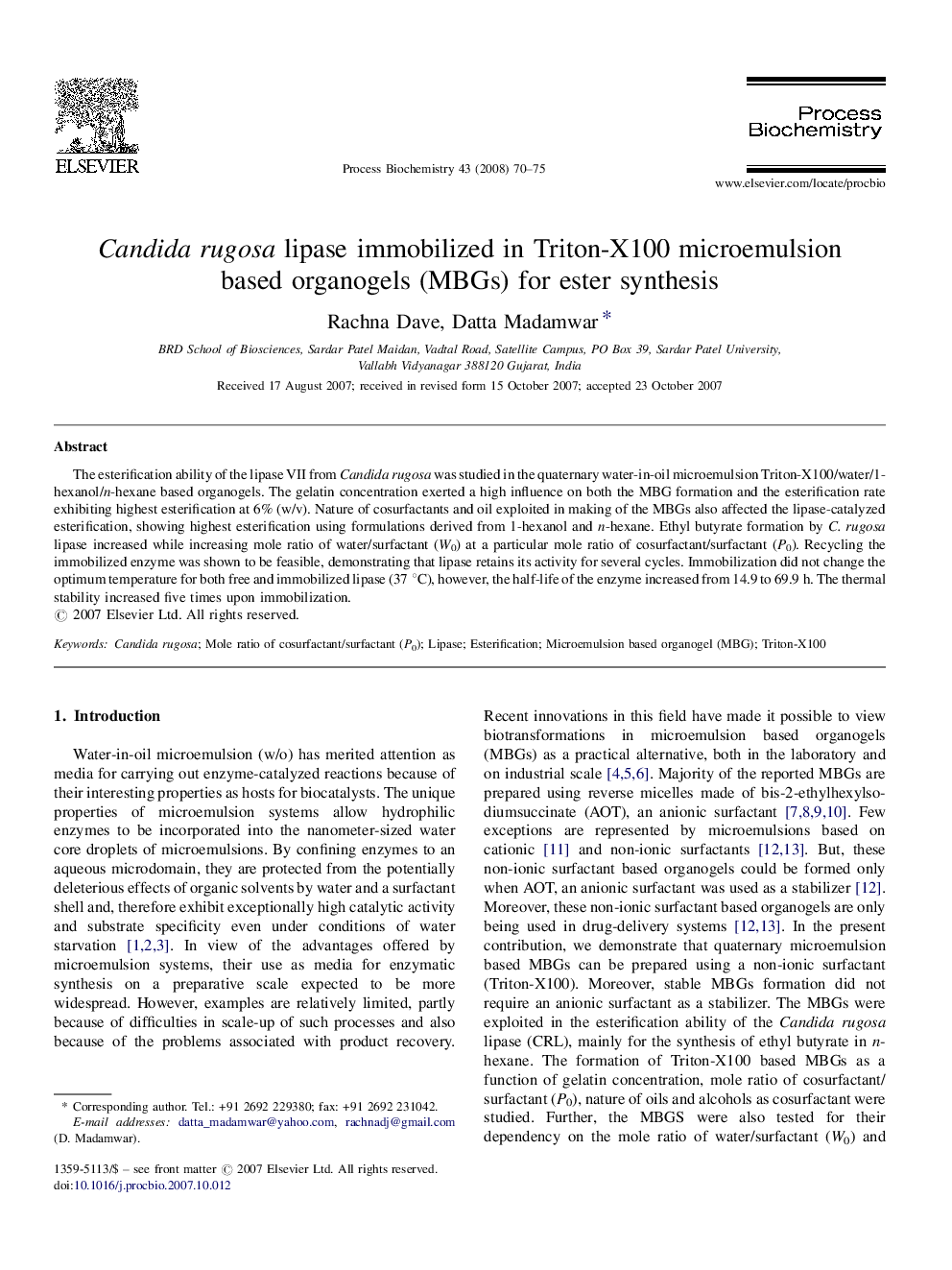| Article ID | Journal | Published Year | Pages | File Type |
|---|---|---|---|---|
| 35918 | Process Biochemistry | 2008 | 6 Pages |
The esterification ability of the lipase VII from Candida rugosa was studied in the quaternary water-in-oil microemulsion Triton-X100/water/1-hexanol/n-hexane based organogels. The gelatin concentration exerted a high influence on both the MBG formation and the esterification rate exhibiting highest esterification at 6% (w/v). Nature of cosurfactants and oil exploited in making of the MBGs also affected the lipase-catalyzed esterification, showing highest esterification using formulations derived from 1-hexanol and n-hexane. Ethyl butyrate formation by C. rugosa lipase increased while increasing mole ratio of water/surfactant (W0) at a particular mole ratio of cosurfactant/surfactant (P0). Recycling the immobilized enzyme was shown to be feasible, demonstrating that lipase retains its activity for several cycles. Immobilization did not change the optimum temperature for both free and immobilized lipase (37 °C), however, the half-life of the enzyme increased from 14.9 to 69.9 h. The thermal stability increased five times upon immobilization.
